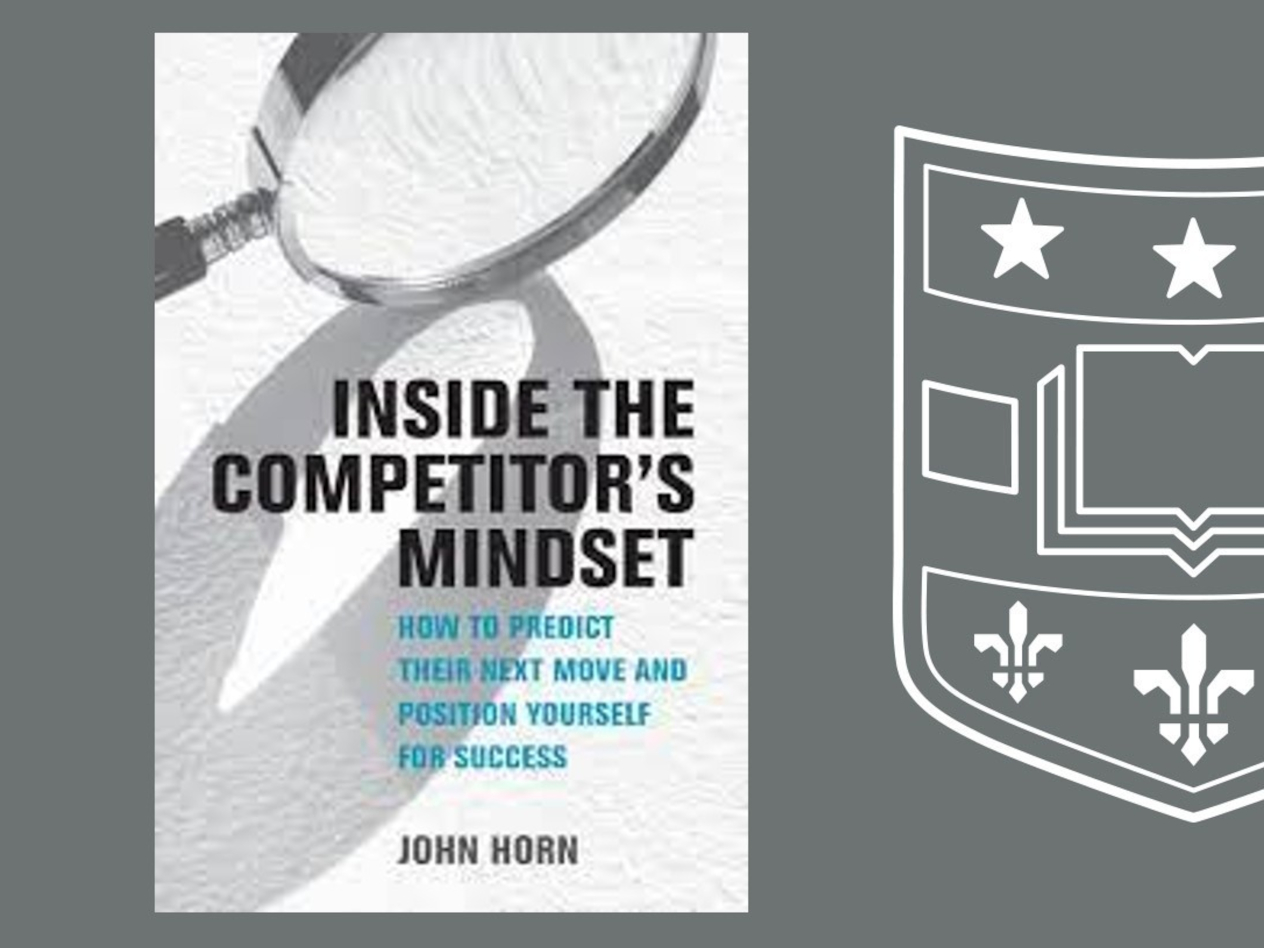From Professor John Horn: A book to help business leaders think like their competitors
- January 23, 2023
- By Jill Young Miller
- 2 minute read

When John Horn started helping companies run war games—simulations to determine the best strategies to take regarding competitors—he was struck by how clients characterized their competitors.
Often, they’d say they couldn’t role-play specific competitors in a workshop because those competitors were “irrational.”

“They truly believed this. They couldn’t wrap their minds around why competitors behaved the way they did,” said Horn, professor of practice in economics at Olin Business School. “It always struck me as odd.”
In his career, he has worked “with really large companies whose competitors were really large companies. And you don’t get to be a really large company by acting irrational.”
To help businesses think like their competitors, Horn wrote the book Inside the Competitor’s Mindset: How to Predict Their Next Move and Position Yourself for Success (The MIT Press, $34.95).
Culmination of decades of work
“This book was the culmination of about almost 20 years of work on competitive insight,” said Horn, who was a senior expert in the strategy practice of McKinsey & Company, based out of the Washington, DC, office, before joining Olin in 2013. He spent most of his nine years at McKinsey working with clients on competitive strategy, war gaming workshops and corporate and business unit strategy across many industries and geographies.
By using some relatively simple techniques, companies can gain insight into what their competitors are likely to do and be better prepared when it’s time to act, according to the 272-page book to be released April 11, 2023.
“The point of competitive insight is not to explain why a specific action occurred in the past but to get a better understanding of what might happen in the future,” Horn said. “Strategic thinking is inherently a forward-looking effort.”
Readers will learn where to look for competitive insights; learn to anticipate how competitors will react to their company’s moves; and even apply lessons from archaeologists, paleontologists, neonatal intensive care unit nurses and a homicide detective when they can’t ask direct questions.
The retired homicide detective, for instance, shared that all cases are different, so go where the evidence and witness statements lead. The detective saw the job as always asking questions and playing devil’s advocate to test the conclusions of the case officers. What else is missing? What else can you do?
Horn interviewed more than two dozen professionals from the above fields and synthesized their insights into guidance for business strategists. One strong takeaway: “You have to have a diverse team, or you’ll miss something.”
“We’re not going to retroactively solve for the historical ‘why’ but focus on the forward-looking ‘how can we make sense without talking with them?’” Horn says in the book.
“In the real world, you have to rely on second- or thirdhand reporting and piece it together without the inside story.”
Media inquiries
For assistance with media inquiries and to find faculty experts, please contact Washington University Marketing & Communications.
Monday–Friday, 8:30 to 5 p.m.
Sara Savat
Senior News Director, Business and Social Sciences
